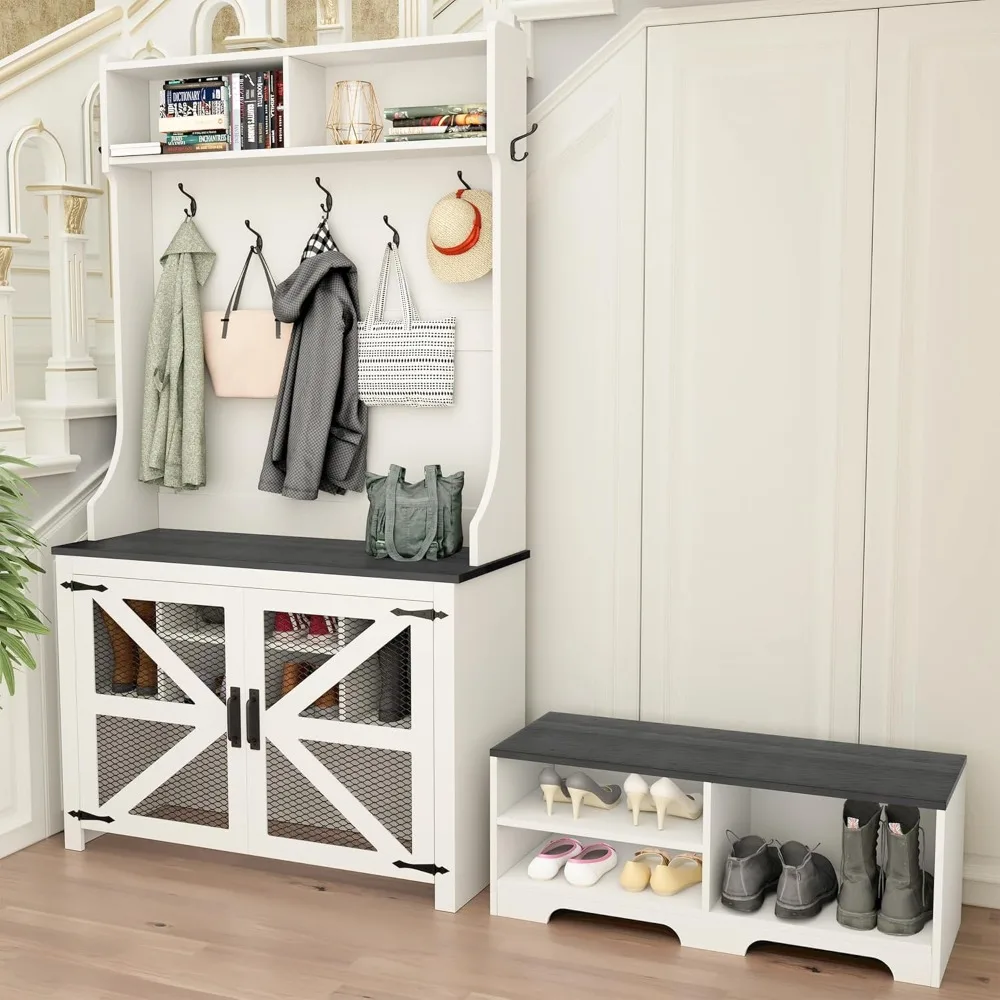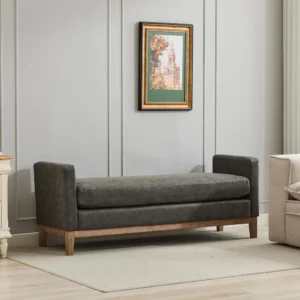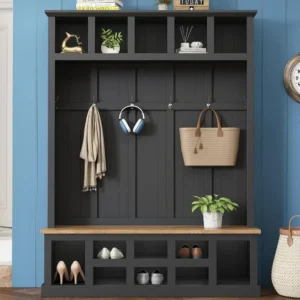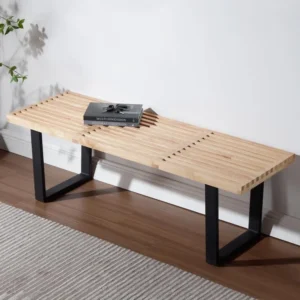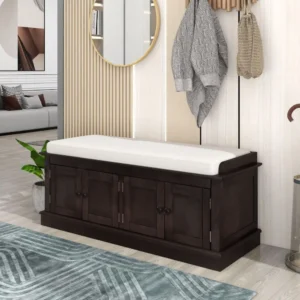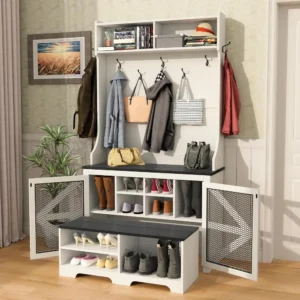Introduction: The Essential Transition Space in Modern Homes
Imagine your family returning home after a rainy soccer practice – muddy cleats, wet jackets, dripping umbrellas, and soggy backpacks in tow. Without a designated space to contain this mess, all that dirt and moisture would make its way into your living areas. This scenario perfectly illustrates why mudrooms have become an essential feature in modern homes.
A mudroom serves as a dedicated transition space between the outdoors and your main living areas. Historically born from practical necessity in rural and farmhouse settings, mudrooms have evolved from simple utility areas to highly desirable home features that combine functionality with thoughtful design. Their increasing popularity stems from the perfect balance they strike between practical organization and stylish presentation.
These specialized entry spaces solve common household challenges by creating a buffer zone that prevents dirt, water, and clutter from migrating throughout your home. Today’s mudrooms are more than just a place to kick off dirty boots – they’ve become command centers for functional mudroom seating solutions and family organization.
What Exactly is a Mudroom? Defining the Transitional Space
A mudroom is a specialized entryway specifically designed to contain outdoor elements and organize gear before they enter your main living spaces. Unlike casual entryways or decorative foyers, mudrooms are purpose-built with functionality as their primary focus.
The core characteristics that define a true mudroom include:
- A buffer zone that separates outdoor elements from indoor spaces
- Durable, easy-to-clean materials that withstand moisture, dirt, and heavy traffic
- Storage-focused design elements that organize outdoor gear and everyday essentials
- Practical surfaces and features that facilitate transitions between outdoors and indoors
The term “mudroom” has practical origins that explain its purpose – it’s literally a room designed to contain mud and outdoor debris. While you might wonder why is it called a mudroom, the straightforward name reflects its primary function of preventing outdoor messes from entering your home’s living spaces.
Unlike formal foyers that focus on making a stylish first impression or standard entryways that may lack specialized storage, mudrooms are meticulously designed for organization and cleanliness. In modern architecture, they’ve evolved from purely utilitarian spaces to beautiful, organized transitions that blend seamlessly with home design while still maintaining their practical purpose.
The Essential Benefits: Why Mudrooms Matter in Home Design
Maintaining Home Cleanliness
One of the primary benefits of a mudroom is its ability to contain outdoor elements before they spread throughout your home. By providing a designated space for removing and storing dirty shoes, wet umbrellas, and muddy sports equipment, these transition areas significantly reduce the amount of dirt and debris that makes its way into your living spaces.
The strategic placement of mudrooms creates an effective “zoning” system for cleanliness, allowing you to establish clear boundaries between outdoor messes and clean indoor areas. This containment zone translates to less sweeping, mopping, and vacuuming throughout your home, making overall maintenance much more manageable.
Enhanced Organization and Storage Solutions
Mudrooms excel at providing specialized storage designed for the unique items that tend to create entryway clutter. With customized spaces for:
- Seasonal outdoor gear like coats, hats, and gloves
- Everyday essentials such as keys, bags, and mail
- Family-specific items like backpacks, sports equipment, and pet supplies
This dedicated organization system reduces clutter throughout your home by giving everything an assigned place. When designing your storage, consider how mastering mudroom best bench styles can dramatically improve both the function and appearance of your space.
Streamlined Daily Routines
A well-designed mudroom creates efficiency in your family’s comings and goings by establishing clear systems for arrivals and departures. Morning routines become smoother when everyone knows exactly where to find their essentials, while evening returns are simplified with designated drop zones for bags, shoes, and outerwear.
This organization dramatically reduces the frustration of searching for lost items by creating consistent homes for everything your family needs when heading out the door. The time savings may seem small day-to-day but add up significantly over time.
Added Home Value and Appeal
Beyond practical benefits, mudrooms have become highly desirable features that can increase your home’s market appeal. Real estate professionals regularly highlight mudrooms as coveted features, particularly in family-oriented neighborhoods and regions with seasonal weather challenges.
The return on investment for a well-designed mudroom can be substantial, especially when the space offers thoughtful storage solutions that highlight the home’s functionality. Potential buyers often view these transition spaces as must-have features that demonstrate a home’s practical design.
Strategic Placement: Where to Locate Your Mudroom
The most effective location for a mudroom depends largely on your home’s layout and your family’s primary entry point. Common placement options include:
- Adjacent to a back or side door, creating a buffer before reaching main living areas
- Connected to the garage entrance, capturing clutter before it enters the home
- Near kitchen or laundry areas for convenient cleaning and organization
- As a converted portion of an existing porch, breezeway, or utility space
When planning the perfect tiny mudroom, carefully consider traffic patterns throughout your home. The ideal location intercepts your family’s natural path from outdoors to indoors, making the space intuitive to use rather than requiring a detour.
Space requirements vary widely depending on your needs and available area. While expansive mudrooms with multiple storage zones and seating areas are wonderful, even a compact 3×5 foot area can provide essential functionality when designed thoughtfully. For existing homes without dedicated mudroom space, creative conversions of hallways, closets, or portions of other rooms can achieve similar benefits.
Must-Have Features: Elements of a Functional Mudroom
Resilient Flooring Solutions
The foundation of any effective mudroom starts with appropriate flooring that can withstand water, dirt, and heavy traffic. Ideal options include:
- Porcelain or ceramic tile with proper grout sealing
- Luxury vinyl plank or tile with waterproof properties
- Sealed concrete for industrial-inspired designs
- Natural stone like slate for classic durability
The best flooring choices combine easy cleaning with moisture resistance and attractive appearance. Consider subtle patterns or darker colors that disguise dirt between cleanings, and ensure proper transitions between your mudroom flooring and adjacent rooms to prevent tracking water further into the home.
Practical Seating Options
A dedicated place to sit transforms the experience of removing shoes and boots, making the transition from outdoors to indoors much more comfortable. Effective seating options include:
- Built-in benches with hidden storage compartments
- Freestanding storage benches that can be repositioned
- Wall-mounted flip-down seats for very tight spaces
- Stools or chairs that tuck neatly under countertops
Our collection of mudroom benches offers various options that combine comfortable seating with practical storage. When selecting seating, consider the height needs of all family members and ensure enough space for comfortable use without creating traffic jams during busy mornings.
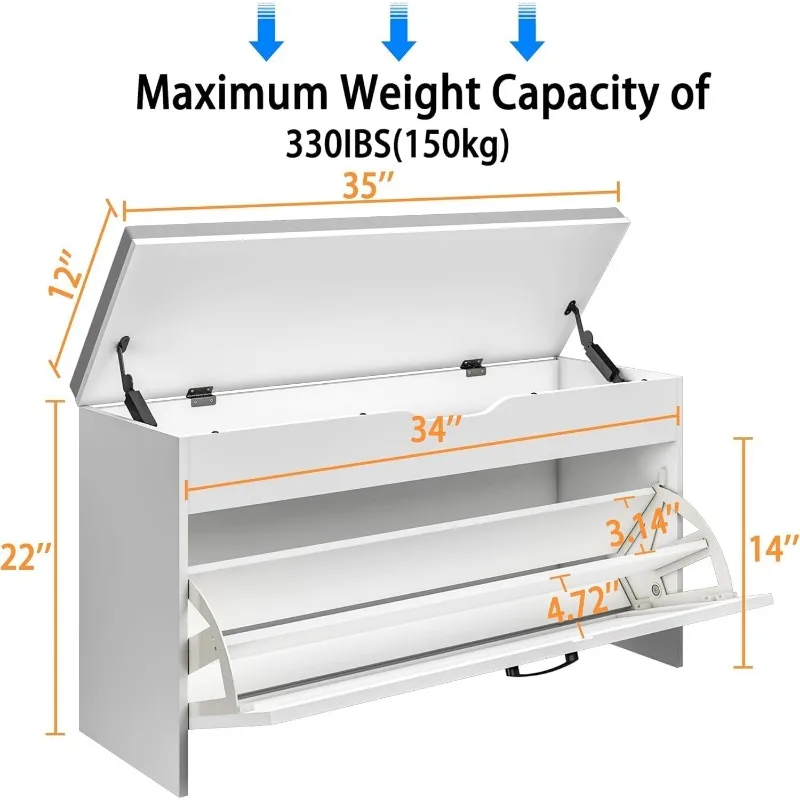
Comprehensive Storage Systems
Effective storage is the heart of a functional mudroom, with several key components working together:
- Wall-mounted hooks at various heights for coats, bags, and accessories
- Open cubbies or lockers for frequent-use items and visual organization
- Closed cabinets to conceal seasonal or less attractive items
- Shelving for baskets, bins, and display-worthy elements
The best storage systems balance open and closed options, allowing quick access to everyday items while providing concealment for visual clutter. Vertical storage is particularly valuable in smaller spaces, utilizing wall height to maximize capacity without consuming floor space.
Custom solutions offer perfect fits for unique spaces, while quality pre-fabricated options like those from Nested Goods provide excellent functionality with faster implementation. For families constantly juggling busy schedules, mudroom seating for busy homes provides specialized solutions that keep pace with active lifestyles.
Functional Add-ons
Beyond basic seating and storage, several additional features can enhance your mudroom’s utility:
- A utility sink for cleaning muddy boots, sports equipment, or pet paws
- Boot trays and drying mats to contain moisture from wet footwear
- Wall-mounted or freestanding drying racks for damp outerwear
- Charging stations for electronic devices
- Task lighting to ensure visibility in what is often an interior room
These practical additions transform a simple transition space into a highly functional area that solves multiple household challenges simultaneously.
Practical Organization: What Goes in a Mudroom
The items stored in your mudroom should reflect your family’s specific activities and needs, typically including:
Everyday Essentials:
– Shoes, boots, and other footwear
– Coats, jackets, and outerwear
– Bags, purses, and backpacks
– Keys, wallets, and phone storage
Seasonal Items:
– Weather-specific gear (umbrellas, sun hats, winter accessories)
– Sports and recreational equipment
– Gardening tools and accessories
– Holiday-specific items (beach bags, snow gear)
Family-Specific Needs:
– Pet supplies (leashes, towels, toys)
– Children’s school and activity items
– Mobility aids or specialized equipment
– Hobby or work-related gear
Effective organization often involves creating dedicated zones for different family members or activities. Our mudroom bench shoe storage solutions help manage one of the most challenging categories – the ever-growing collection of family footwear.
The best organization systems adapt seasonally, allowing for rotation of winter coats and boots to storage during summer months, replaced by warm-weather gear like sun hats and beach bags. This rotation keeps your mudroom functional year-round without becoming overcrowded.
Designing Your Ideal Mudroom: Key Considerations
Creating the perfect mudroom begins with a thorough assessment of your family’s specific needs and habits:
- How many people will use the space regularly?
- What activities generate the most entryway clutter in your home?
- What items consistently lack proper storage in your current setup?
- How much space can you realistically allocate to this function?
Once you understand your requirements, consider how to balance practical functionality with visual appeal that complements your home’s overall aesthetic. The most successful mudrooms don’t sacrifice style for function but rather find creative ways to make organizational elements attractive.
Material selection significantly impacts both durability and appearance. Choose surfaces that can withstand moisture and heavy use while still contributing to your desired style. Wood elements add warmth but require proper sealing, while metal components offer industrial charm with excellent durability.
For comprehensive planning guidance, our designing functional mudroom complete guide walks through the entire process from initial measurements to final decorative touches.
Style Approaches: From Farmhouse to Modern Mudrooms
Classic Farmhouse
The farmhouse aesthetic brings warmth and rustic charm to mudroom spaces through:
– Shiplap wall treatments or beadboard paneling
– Natural wood benches with visible grain and character
– Open storage solutions showcasing woven baskets
– Vintage hooks and hardware with patina and history
– Neutral color palettes with selective pops of countryside-inspired color
Our popular farmhouse mudroom bench collection captures this welcoming, lived-in style while providing exceptional functionality.
Modern Minimalist
For those preferring clean, uncluttered aesthetics, modern minimalist mudrooms feature:
– Hidden storage that conceals contents behind sleek facades
– Monochromatic or limited color schemes for visual calm
– Streamlined hardware with minimal ornamentation
– Multi-functional pieces that serve dual purposes
– Strategic lighting that highlights architectural features
The success of minimalist designs depends on exceptional organization systems that keep clutter truly contained rather than simply hidden.

Transitional Elegance
Bridging traditional comfort with contemporary sensibilities, transitional mudrooms incorporate:
– Classic architectural details with updated proportions
– A thoughtful balance of open and closed storage elements
– Sophisticated neutral palettes with subtle texture variation
– Refined materials like marble countertops paired with painted cabinetry
– Quality hardware that serves as functional jewelry for the space
This versatile approach adapts beautifully to various home styles and ages gracefully over time.
Coastal Casual
Drawing inspiration from seaside living, coastal mudrooms feature:
– Light, airy color palettes reminiscent of sand, sky, and water
– Natural textures like rope, rattan, and weathered wood
– Weather-resistant finishes that handle moisture with ease
– Open, breezy designs that feel relaxed and welcoming
– Nautical design elements incorporated subtly through hardware or accessories
This style brings a perpetual vacation feeling to everyday organization.
Specialized Adaptations: Mudrooms for Specific Needs
Pet-Friendly Features
For animal lovers, specialized mudroom adaptations might include:
– Built-in feeding stations that contain mess
– Dedicated pet washing areas with hand-held sprayers
– Storage for leashes, toys, and pet supplies
– Durable flooring that resists scratches and accidents
– Easy-access hooks for leashes and walking gear
Child-Focused Designs
Families with young children benefit from age-appropriate mudroom elements:
– Lower hooks and cubbies accessible to small hands
– Step stools integrated into bench designs
– Simplified organization systems with picture labels
– Durable finishes that withstand creative exploration
– Homework stations or communication centers for school-aged children
Compact Solutions
Limited space doesn’t mean limited function, as demonstrated in our guide to creative small mudroom organization. Even tight spaces can incorporate:
– Wall-mounted folding hooks that extend only when needed
– Narrow benches that maximize seating while minimizing footprint
– Vertical storage that utilizes height rather than floor space
– Multi-functional furniture that serves several purposes
– Visual tricks like light colors and mirrors to enhance spaciousness
Clarifying Distinctions: Mudroom vs. Other Entry Spaces
Understanding the differences between various entry spaces helps clarify which best meets your needs:
Mudroom vs. Foyer:
While foyers primarily serve as formal welcoming spaces with decorative elements, mudrooms prioritize function and organization. Foyers typically connect to main living areas and make design statements, while mudrooms create practical buffers between outdoors and indoors.
Mudroom vs. Laundry Room:
Though often combined in modern homes, these spaces serve different primary functions. Laundry rooms focus on clothing care with washers, dryers, and folding areas, while mudrooms manage outdoor gear and transitions. Combination spaces must carefully balance both needs with proper zoning.
Mudroom vs. Boot Room:
These terms are often used interchangeably, though “boot room” has stronger connections to British and rural terminology. The functions are nearly identical, focusing on outdoor gear storage and transition management.
The foundation of any mudroom begins with proper seating, and understanding what is a mudroom bench helps you select the right option for your specific needs and space constraints.
Maintaining Your Mudroom: Cleaning and Organization Tips
Keeping your mudroom functioning optimally requires regular maintenance:
- Daily quick-cleans to remove visible dirt and put away items
- Weekly deeper cleaning of floors and frequently touched surfaces
- Seasonal organization overhauls to rotate appropriate gear
- Quarterly assessment of storage systems to adjust for changing needs
Establish family routines that involve everyone in maintaining the space, with clear expectations about where items belong and regular reset times to prevent creeping clutter. Consider implementing a “one in, one out” policy for certain categories like shoes to prevent overcrowding.
For persistent mudroom challenges, specialized solutions exist:
– Moisture-absorbing products to prevent dampness and odors
– Washable storage bins that can be cleaned regularly
– Labeled systems that clarify where items belong
– Regular rotation schedules for seasonal items
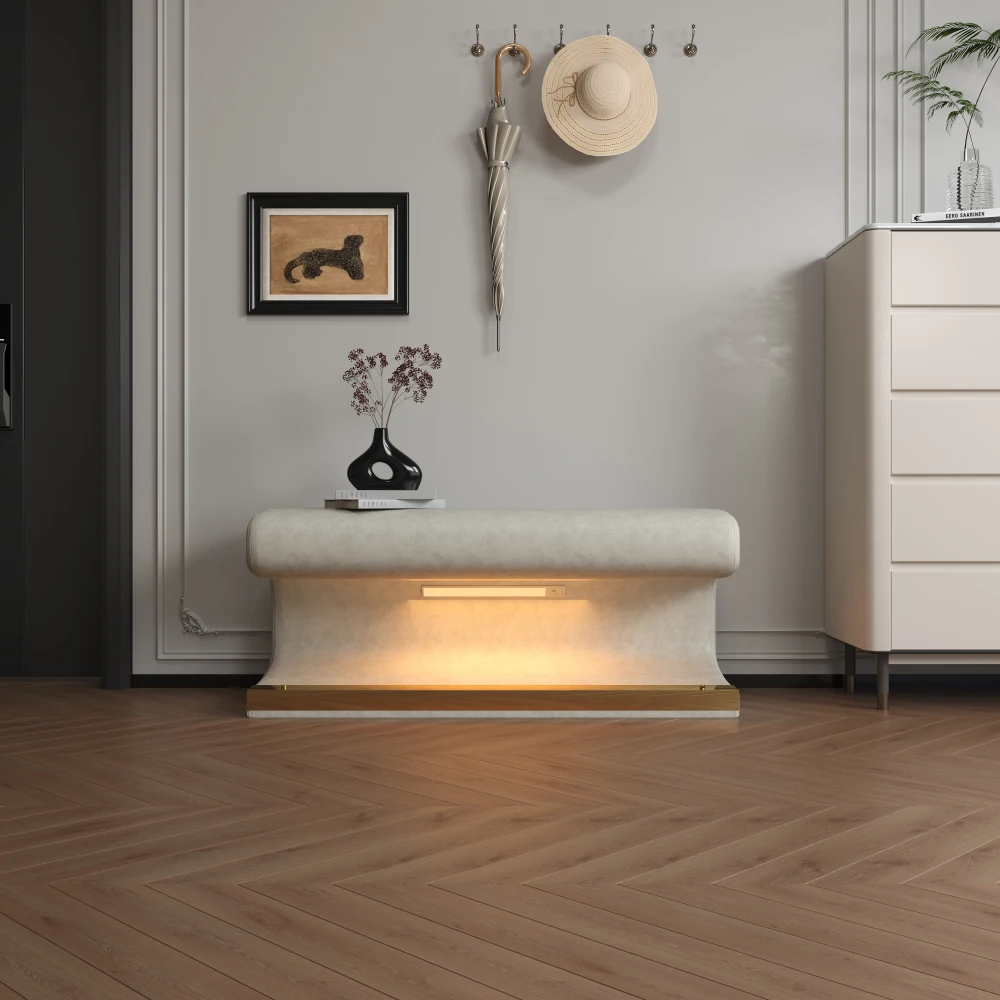
Is a Mudroom Right for Your Home? Making the Decision
To determine if a mudroom would benefit your household, consider these questions:
- Do you frequently deal with tracked-in dirt, mud, or water?
- Does your climate involve snow, rain, or outdoor activities that generate mess?
- Do you struggle with entryway clutter or disorganization?
- Are shoes, coats, and bags regularly scattered throughout your home?
- Do you have children, pets, or hobbies that generate additional gear?
Even homes with limited space can implement mudroom functionality through thoughtful design. Minimum requirements for a basic functional mudroom include just enough space for:
– A small bench or seat (18-24 inches wide)
– Wall-mounted hooks above the seating
– A durable floor surface that can be easily cleaned
– A small storage solution for shoes and everyday items
For homes where dedicated mudrooms aren’t feasible, consider creative alternatives like entryway closet conversions, hallway organization walls, or mudroom coat rack bench combinations that provide similar functionality in compact forms.
Creating Multi-Purpose Utility: When Mudrooms Serve Multiple Functions
Maximize your mudroom’s value by incorporating secondary functions that complement its primary purpose:
- Laundry facilities for convenient handling of dirty sports uniforms or muddy clothing
- Home office nooks with small desks for managing family schedules and paperwork
- Pantry extensions for additional kitchen storage in food-adjacent mudrooms
- Craft corners with supplies for quick creative projects
- Charging stations for family devices with cord management solutions
- Mail sorting centers to prevent paper clutter throughout the home
Multi-functional mudroom benches serve as the foundation for these versatile spaces, providing seating that often contains hidden storage or converts to other uses as needed.
Entryway Bench with Cushion, Mudroom Bench with Cushion, Shoe Bench for Entryway
$1,186.63 Select options This product has multiple variants. The options may be chosen on the product pageBench with Hooks and Storage, Entryway Hall Tree, Mudroom Bench with Cubbies, Mudroom Bench with Shoe Storage
$818.38 Select options This product has multiple variants. The options may be chosen on the product pageModern Entryway Bench, Wood Entryway Bench, Wood Mudroom Bench
$497.69 Select options This product has multiple variants. The options may be chosen on the product pageEntryway Coat Rack Bench, Entryway Hall Tree, Farmhouse Mudroom Bench, Mudroom Bench with Shoe Storage
$805.09 Select options This product has multiple variants. The options may be chosen on the product pageEntryway Bench with Cushion, Mudroom Bench with Cabinets, Shoe Bench for Entryway, Shoe Bench with Cushion
$991.71 Select options This product has multiple variants. The options may be chosen on the product pageBench with Hooks and Storage, Entryway Coat Rack Bench, Entryway Hall Tree, Mudroom Bench with Shoe Storage, Mudroom Coat Rack Bench
$793.73 Select options This product has multiple variants. The options may be chosen on the product page
Small Space Solutions: Creating Mudroom Functionality Without a Dedicated Room
Limited square footage doesn’t mean you must sacrifice organization. Consider these space-efficient approaches:
- Wall-mounted solutions like hook rails with small shelves above
- Slim hall trees that combine vertical storage with minimal footprint
- Entryway closet conversions with customized organization systems
- Under-stair spaces transformed with seating and storage
- Corner configurations that utilize often-wasted angular spaces
- Furniture-based solutions like storage benches with coat racks
These alternatives deliver core mudroom functionality without requiring a separate room, making them perfect for apartments, condos, or smaller homes where every square foot matters.
Investment Considerations: What to Expect When Adding a Mudroom
When planning your mudroom, consider these financial factors:
- Basic mudroom setups with bench seating and simple storage typically start around $500-1,500 for DIY approaches
- Mid-range solutions with quality pre-made furniture pieces generally run $1,500-3,500
- Custom built-in cabinetry and premium materials can range from $3,500 to $10,000+ depending on complexity
The long-term value often justifies the investment through:
– Reduced cleaning costs and effort throughout your home
– Protection of flooring and furnishings from dirt and moisture damage
– Improved organization reducing replacement costs for lost items
– Potential home value increase when selling
For budget constraints, consider phased implementation, starting with essential elements like seating and hooks, then adding additional storage and features over time as budget allows.
Your Questions Answered: Common Mudroom FAQs
Do mudrooms need plumbing?
No, plumbing is optional. While utility sinks and washing stations are helpful additions, many excellent mudrooms function perfectly without water access.
How small can a functional mudroom be?
A basic mudroom can function in as little as 15-20 square feet, provided the space is efficiently designed with vertical storage and multi-purpose elements.
Can I convert part of my garage into a mudroom?
Yes, garage conversions are popular mudroom solutions, particularly when the garage serves as a primary entry point. Ensure proper insulation and flooring transitions for comfort.
What’s the best flooring for a mudroom with pets?
Luxury vinyl tile or plank flooring offers an excellent balance of durability, water resistance, and scratch protection while remaining comfortable for pet paws.
How do I prevent mudroom odors?
Regular cleaning, good ventilation, moisture-absorbing products, and washable storage containers all help manage potential odor issues in mudrooms.
Can a mudroom increase my home’s value?
Yes, well-designed mudrooms often increase home appeal and value, particularly in family-friendly neighborhoods and regions with seasonal weather challenges.
How do I keep my mudroom organized with multiple children?
Assign dedicated zones for each child with personalized hooks, cubbies, and storage bins. Color-coding or labeling helps maintain clear ownership and responsibility.

